Content Menu
● What is UPF Swimwear?
>> UPF vs SPF
● Materials Used in UPF Swimwear
>> Key Material Features
>> Innovative Fabrics
● Benefits of UPF 50+ Swimwear
>> Additional Benefits
● How Does UPF Swimwear Work?
>> Mechanism of Protection
>> Testing Standards
● Choosing the Right UPF Swimwear
>> Style Considerations
● Common Misconceptions About UPF Swimwear
● Frequently Asked Questions (FAQs)
>> 1. What is the difference between UPF and SPF?
>> 2. Can I wash my UPF swimwear?
>> 3. Is all swimwear created equal?
>> 4. Do I still need sunscreen with UPF clothing?
>> 5. How long does the protection last?
>> 6. Can children wear UPF swimwear?
>> 7. Are there any specific brands known for high-quality UPF swimwear?
>> 8. How do I know if my swimwear is truly providing sun protection?
● Conclusion
● Citations:
UPF (Ultraviolet Protection Factor) swimwear, particularly those rated UPF 50+, has become increasingly essential for sun protection during outdoor activities. This article delves into what makes UPF 50+ swimwear effective, the materials used, benefits, and how it compares to traditional swimwear. We will also explore common questions surrounding UPF swimwear, providing a comprehensive understanding of its importance in sun safety.
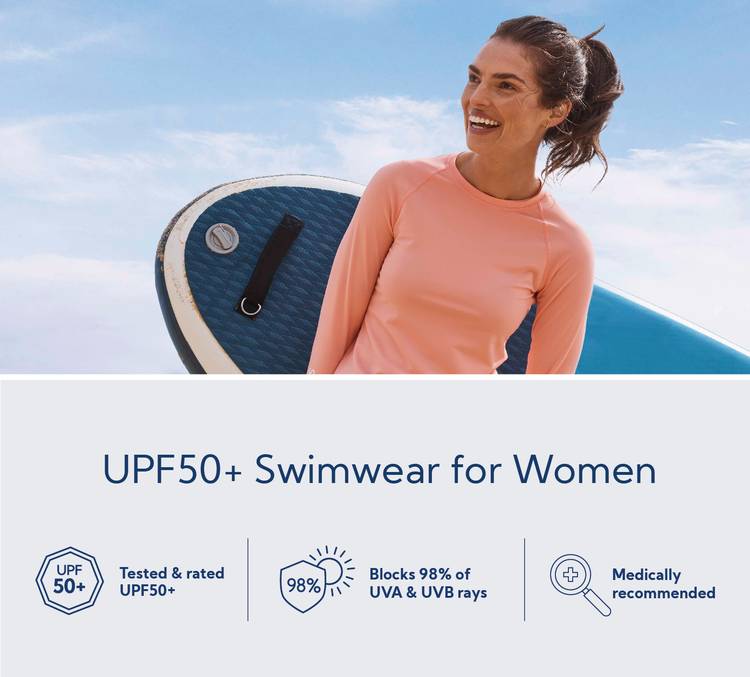
What is UPF Swimwear?
UPF Explained
UPF is a rating system that measures how much ultraviolet (UV) radiation can penetrate a fabric and reach the skin. A UPF rating of 50+ indicates that the fabric blocks at least 98% of UVA and UVB rays, significantly reducing the risk of skin damage and skin cancer.
Comparison with SPF
While SPF (Sun Protection Factor) measures the effectiveness of sunscreen against UVB rays, UPF provides a broader measure of protection against both UVA and UVB rays. This makes UPF clothing particularly valuable as it offers continuous protection without the need for reapplication like sunscreen.
UPF vs SPF
| Feature | UPF Swimwear | SPF Sunscreen |
| Protection Type | Blocks UV radiation | Absorbs UV radiation |
| Application | Worn as clothing | Applied to the skin |
| Reapplication | Not needed | Needs to be reapplied |
| Duration | Long-lasting with care | Limited duration |
Materials Used in UPF Swimwear
The effectiveness of UPF swimwear largely depends on the materials used in its construction. Here are some common materials:
- Synthetic Fabrics: Materials like polyester and nylon are often used due to their tight weave, which provides superior UV protection compared to natural fibers like cotton.
- Specialized Fabrics: Some brands incorporate UV-absorbing additives into their fabrics to enhance sun protection capabilities.
- Breathable and Stretchable: Many UPF swimwear options are designed to be lightweight and flexible, allowing for comfort during water activities while still providing maximum coverage.
Key Material Features
| Material Type | UV Protection | Comfort Level | Quick-Drying |
| Polyester | High | Moderate | Yes |
| Nylon | High | High | Yes |
| Cotton | Low | High | No |
Innovative Fabrics
Recent advancements in textile technology have led to the development of innovative fabrics that offer even better sun protection. Some examples include:
- Recycled Fabrics: Brands are increasingly using recycled materials, such as recycled polyester made from plastic bottles, which not only helps the environment but also provides excellent UV protection.
- Moisture-Wicking Fabrics: These fabrics pull moisture away from the skin, keeping wearers cool and comfortable while also enhancing the fabric's ability to block UV rays.
- Cooling Technologies: Some UPF swimwear incorporates cooling technologies that help regulate body temperature in hot weather, making them ideal for prolonged outdoor activities.
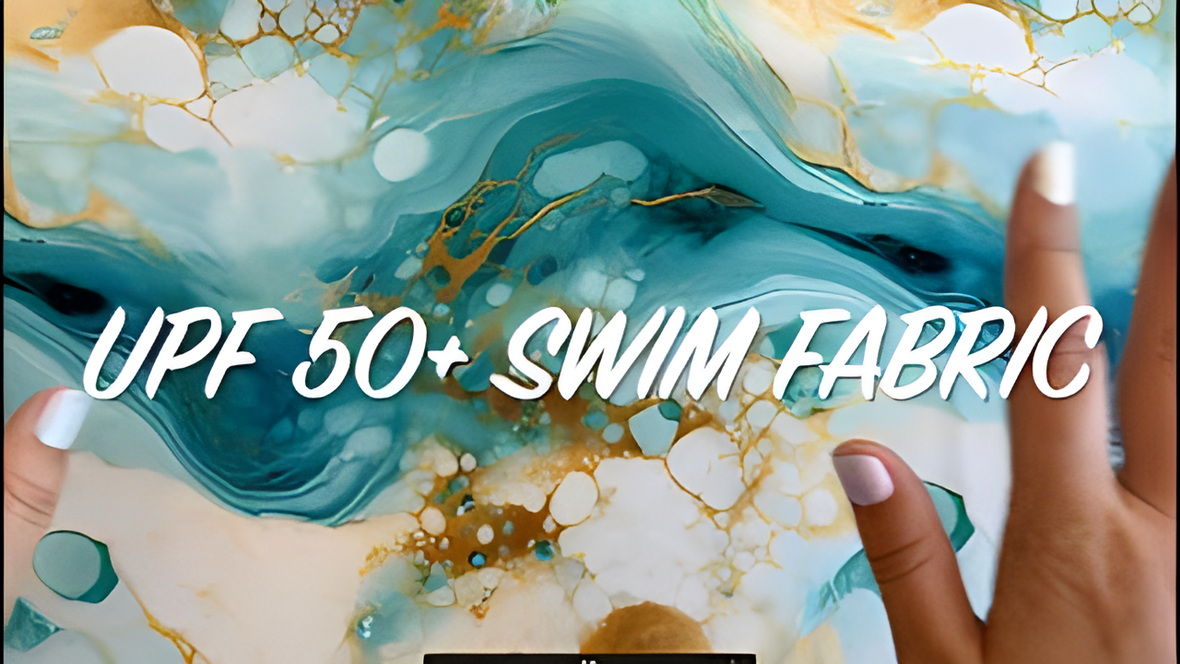
Benefits of UPF 50+ Swimwear
1. Effective Sun Protection: Blocks up to 98% of harmful UV rays.
2. Convenience: Acts as a built-in sunscreen that does not wash off.
3. Comfort: Designed for breathability and flexibility, making it suitable for various activities.
4. Durability: Many UPF fabrics are resistant to chlorine and saltwater, making them ideal for pool and beach use.
5. Fashionable Options: Available in various styles and colors, allowing wearers to express their personal style while staying protected.
Additional Benefits
6. Reduced Skin Damage Risk: Regular use of UPF swimwear can significantly reduce the risk of skin damage over time, including premature aging and skin cancers.
7. Environmentally Friendly Choices: Many brands are moving towards sustainable practices by using eco-friendly materials and production processes.
8. Versatility: UPF swimwear can be worn not just for swimming but also for other outdoor activities like hiking, biking, or simply lounging at the beach.
How Does UPF Swimwear Work?
The effectiveness of UPF swimwear lies in its fabric construction:
- Tight Weave: Fabrics with a tighter weave allow less UV radiation to pass through.
- Color: Darker colors tend to absorb more UV radiation than lighter colors, providing better protection.
- Moisture Management: Many UPF fabrics are designed to wick moisture away from the skin, keeping wearers cool and comfortable during hot weather.
Mechanism of Protection
The protective mechanism can be summarized as follows:
1. Absorption: The fabric absorbs UV radiation.
2. Reflection: Some fabrics reflect UV rays away from the skin.
3. Scattering: The structure of the fabric scatters UV rays, reducing their intensity before they reach the skin.
Testing Standards
UPF ratings are determined through rigorous testing methods that assess how much UV radiation is blocked by a fabric sample under controlled conditions. The tests consider various factors such as fabric type, color, weight, and construction techniques.
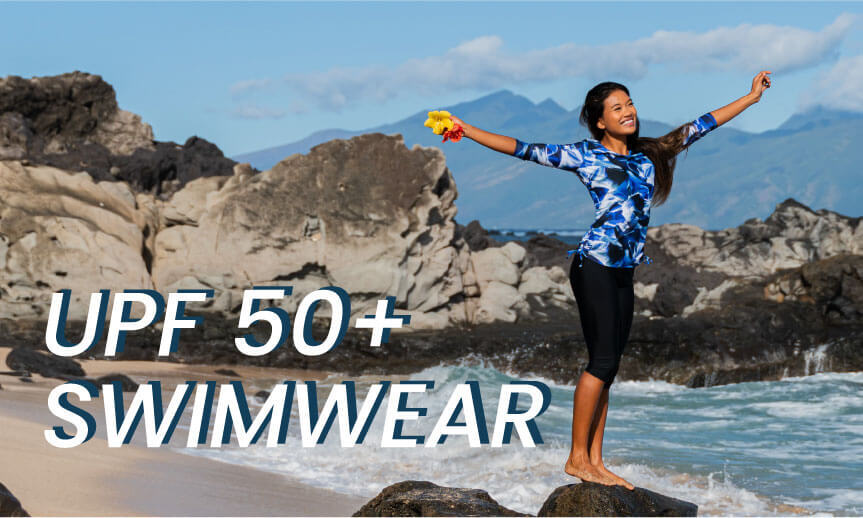
Choosing the Right UPF Swimwear
When selecting UPF swimwear, consider the following factors:
- UPF Rating: Look for garments with a rating of 50+ for maximum protection.
- Fit and Comfort: Ensure that the swimwear fits well and allows for movement.
- Activity Type: Choose styles suited for your specific activities (e.g., rash guards for surfing or one-piece suits for swimming).
- Care Instructions: Follow care instructions to maintain the integrity of the UPF protection over time.
Style Considerations
UPF swimwear comes in various styles tailored for different preferences:
- Rash Guards: Ideal for surfers or those engaging in water sports; they provide coverage while allowing freedom of movement.
- Swim Dresses: Offer more coverage and can be stylish options for beach outings or pool parties.
- Board Shorts & Swim Trunks: Popular among men; these provide comfort while ensuring sun protection on exposed areas.
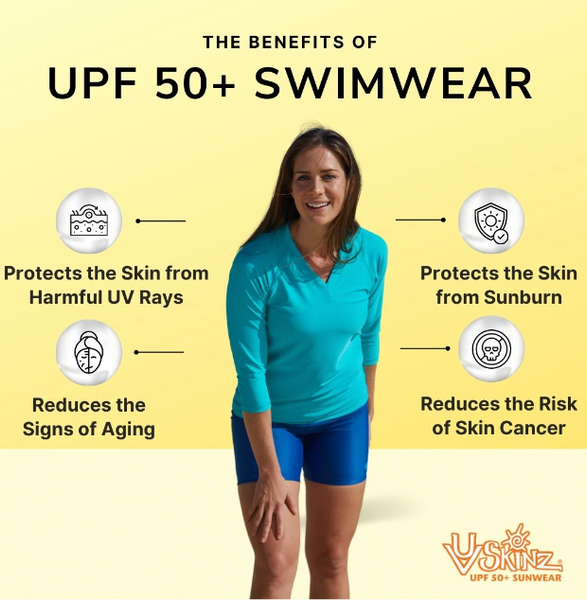
Common Misconceptions About UPF Swimwear
1. Myth: All clothing provides equal sun protection.
- Fact: Only clothing specifically labeled with a UPF rating has been tested for its ability to block UV rays effectively.
2. Myth: You don't need sunscreen if you wear UPF clothing.
- Fact: While UPF clothing provides significant protection, it should be used in conjunction with sunscreen for exposed areas.
3. Myth: Light-colored fabrics are just as protective as dark ones.
- Fact: Darker colors generally provide better UV protection compared to lighter shades.
4. Myth: Once you buy UPF swimwear, you're set for life.
- Fact: The protective qualities can diminish over time due to wear and washing; regular assessment is necessary.
5. Myth: You only need sun protection at the beach or pool.
- Fact: UV rays can penetrate clouds and reflect off surfaces like water or sand; sun protection is essential even on cloudy days or during winter months.
Frequently Asked Questions (FAQs)
1. What is the difference between UPF and SPF?
- UPF measures how much UV radiation can penetrate fabric, while SPF measures how well sunscreen protects against UVB rays.
2. Can I wash my UPF swimwear?
- Yes, but follow care instructions carefully to maintain its protective qualities.
3. Is all swimwear created equal?
- No, only swimwear labeled with a specific UPF rating has been tested for its sun protective capabilities.
4. Do I still need sunscreen with UPF clothing?
- Yes, especially on exposed areas not covered by clothing.
5. How long does the protection last?
- The effectiveness can last through multiple washes if cared for properly; however, it may diminish over time depending on wear and washing conditions.
6. Can children wear UPF swimwear?
- Absolutely! Many brands offer stylish options specifically designed for children that provide excellent sun protection during outdoor playtime.
7. Are there any specific brands known for high-quality UPF swimwear?
- Yes, brands like Coolibar, Lands' End, and Columbia are well-regarded for their high-quality UPF swimwear offerings.
8. How do I know if my swimwear is truly providing sun protection?
- Look for garments that display a clear UPF rating label; avoid items without this information as they may not provide adequate protection.
Conclusion
UPF 50+ swimwear offers critical protection against harmful UV rays while allowing individuals to enjoy outdoor activities safely. Its specialized materials and design make it an essential part of any sun safety strategy. By understanding what makes up this type of swimwear, consumers can make informed choices that prioritize their health without sacrificing style or comfort.
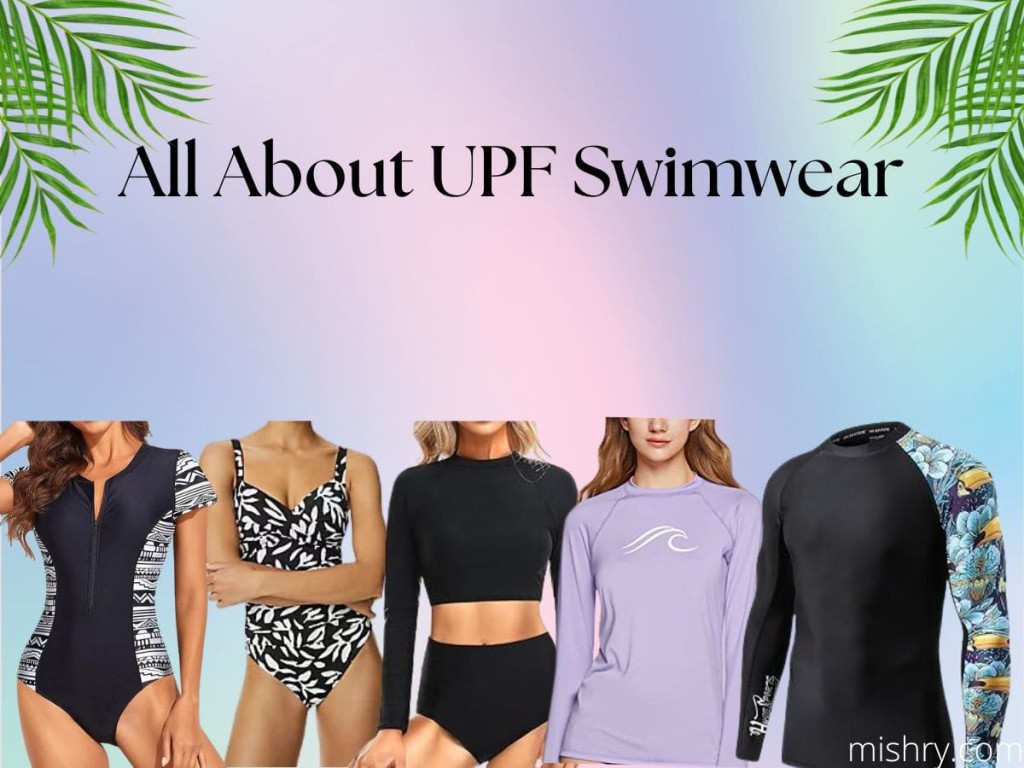
Citations:
[1] https://www.uvskinz.com
[2] https://swimzip.com/collections/sun-protective-swimwear
[3] https://www.curemelanoma.org/about-melanoma/prevention/covering-up-with-clothing
[4] https://pmc.ncbi.nlm.nih.gov/articles/PMC8833350/
[5] https://www.titlenine.com/upf-swimwear-sun-protective-clothing/
[6] https://swimzip.com/collections/upf-swimwear
[7] https://www.cntraveler.com/story/upf-clothing-bathing-suits-accessories
[8] https://uk.oneill.com/collections/womens-skins-uv-protection






































